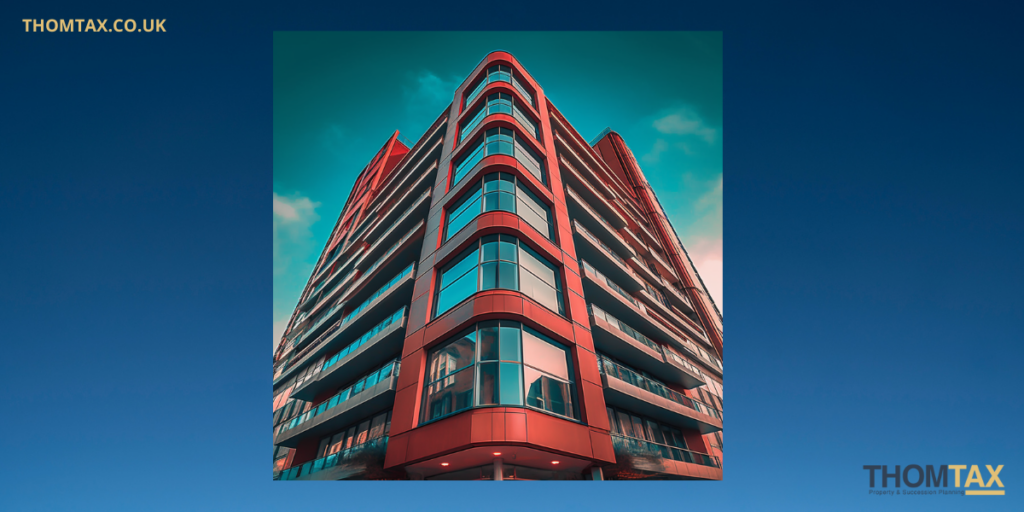Navigating Stamp Duty Land Tax (SDLT) When Buying Property in the UK
When does SDLT come knocking? Well, if:
- You’ve just acquired a freehold or leasehold property.
- You’ve taken the leap to grant or assign a lease.
- Or perhaps, you’ve transferred property or land in exchange for something valuable.
in the last 5 years?
In any of these situations, SDLT will be a part of the journey. It’s essential to get to grips with how it functions to make sure everything runs smoothly.
For residential spaces, SDLT isn’t a one-size-fits-all. Its rate can vary based on whether your property is freehold or leasehold. And if you’re branching out to own more than one residential property? Be prepared for an extra 3% SDLT, regardless of whether you’re purchasing from an individual or a company. In fact, this 3% rule also stands if a company is buying a property. So for the majority of Buy-to-Let (BTL) properties, this extra 3% SDLT will be part and parcel of the deal.
While HMRC’s online resources offer a comprehensive guide on how SDLT varies per your situation, here’s a brief rundown:
- Purchased a freehold residential space costing less than £125,000? SDLT won’t come into play.
- But if it’s priced between £125,001 and £250,000? Expect a Basic Rate SDLT at 2%.
- Any property ringing up between £250,001 and £925,000? SDLT will be tiered based on its value.
- And for our leasehold property owners? The rates swing depending on whether it’s a new agreement or a lease replacement.
- Lastly, properties priced between £925,001 to £1.5m? They come with an added 3% charge. But, there’s a silver lining for first-time buyers in Scotland, as they might just be eligible for some relief courtesy of Scottish Government guidelines.
England SDLT Rates for a single property
| Rate | Price Bands |
| 0% | Up to £250,000 |
| 5% | 250,001 to £925,000 |
| 10% | £925,001 to £1,500,000 |
| 12% | £1,500,000 + |
Scotland LBTT Rates for a single property
| Rate | Price Bands |
| 0% | Up to £145,000 |
| 2% | 145,001 to £250,000 |
| 5% | £250,001 to £325,000 |
| 10% | £325,000 to £750,000 |
| 12% | £750,000+ |
Wales LTT Rates for a single property
| Rate | Price Bands |
| 0% | Up to £225,000 |
| 6% | 225,001 to £400,000 |
| 7.5% | £400,000 to £750,000 |
| 10% | £750,001 to £1,500,000 |
| 12% | £1,500,000 + |

Understanding Commercial & Non-Residential Stamp Duty
Taking the leap into commercial or non-residential property in England or Wales? A warm welcome to the world of property ownership! But, as with most investments, there are formalities to be aware of, and Stamp Duty Land Tax (SDLT) sits right up there. Managed by the Inland Revenue, SDLT applies to assets priced over £150,000, encompassing freehold and both new and existing leasehold properties.
Wondering what falls under ‘non-residential’? Here’s a glimpse:
- Boutique shops and expansive retail spaces
- Cozy offices and sprawling corporate centers
- Garages and handy workshops
- Expansive agricultural land and serene forests
- Efficient warehouses and bustling industrial units
- Properties that masterfully blend living and working quarters.
Moreover, certain residential buildings with numerous units might also enter the non-residential realm, tax-wise.
Here’s the exciting part – how SDLT works! Let’s paint a picture: Say you’ve got your eyes on a freehold retail property tagged at £320,000. The initial £150,000? SDLT-free! The slice between £150,001 and £250,000 carries a 2% rate. And the portion above £250,001? That’s at a 5% SDLT rate.
Venturing into new leasehold sales or transfers? These come with their own SDLT intricacies, tied to the ‘lease premium’ and the ‘net present value’. This latter term hinges on the total rent across the lease’s lifespan. But breathe easy; if it’s under £150,000, SDLT isn’t on your plate.
Remember, time is of the essence. When you cross a certain property price point, HMRC expects the SDLT within 30 days post-completion. Fail to do so, and a fine might be looming. But don’t fret – this is usually a task your solicitor or legal advisor has on their radar. And yes, this applies to everyone; from local enthusiasts, global investors, corporate entities, to non-natural persons.
Stamp Duty on Leasehold Properties
Signing a lease? For residential or non-residential spaces, SDLT rates mirror those discussed. However, there’s a twist with the Net Present Value (NPV) of payable rent. If this exceeds £125,000 for residential spots or £150,000 for non-residential ones, a 1% SDLT applies to the surplus. In layman’s terms? Most won’t face SDLT unless the rent’s set high – think in the ballpark of £4,500 annually for a 99-year tenure.
Navigating the Nuances of Stamp Duty Land Tax (SDLT) in the UK
Real estate deals in the UK often hinge on two pivotal moments: the exchange and the completion. Typically, for SDLT considerations, it’s the completion date that steals the spotlight. However, be wary – some intricate cases might throw a spanner in the works. This approach stands in contrast to Capital Gains Tax regulations, where the exchange date serves as the transaction’s D-day.
Timelines Matter
Overstep the 14-day window post-completion for your SDLT return or payment, and HMRC might just come knocking. Delayed filings within the initial three months invite a £100 fine. Beyond that, you’re staring at a £200 penalty. Late payments? They’re not just frowned upon but also accrue interest. Let the delay spill over a year, and HMRC could claim up to 100% of the pending SDLT. Procrastination, in this case, comes at a hefty price.

Decoding ‘Special Cases’ in SDLT
At its core, SDLT pivots around the price tag attached to a property or a parcel of land. However, venture into the realm of ‘special cases’, and the waters get murkier. The chargeable consideration might envelop monetary aspects, but it also brings non-monetary entities under its fold. Think along the lines of goods or services, land-related work, debt releases, or even debt transfers. And if VAT decides to join the party? The SDLT would envelop the VAT amount too.
Here’s a scenario to ponder: Imagine a property deal with a stipulation for an added £1 million upon securing planning permission. In SDLT’s eyes, you’d be paying tax assuming that this event will unfold.
And, let’s say a company decides to buy from a connected individual. The lens of SDLT shifts from the transaction value to the land’s market value on the transaction date. So, a property’s handover to a limited company by its owner during incorporation would see SDLT calculated on the property’s market value, even if no money changed hands.
Understanding SDLT Exemptions: When Stamp Duty Doesn’t Apply
While navigating the complex terrain of property transactions, it’s heartening to know that not every transfer rings the Stamp Duty Land Tax (SDLT) alarm. Certain scenarios provide relief from this tax, and understanding these exceptions can spare you undue financial burdens.
No Need for Stamp Duty in the Following Scenarios:
- Gifted Properties: Property transfers with no money exchanging hands, often given as gifts, usually escape the SDLT net.
- Post-Divorce Transfers: When property ownership changes due to a divorce settlement, SDLT doesn’t come into play.
- Low-Value Freeholds: If you’re acquiring a freehold property priced under £40,000, SDLT won’t be a concern.
- Low-Value Leaseholds: Leasehold properties boasting a lease premium less than £40,000, coupled with an annual rent below £1,000, are also exempt.
- Inheritance Transfers: In cases where property ownership changes because of a will, SDLT doesn’t factor in.

In such situations, it’s paramount to tread carefully, ensuring you adhere to all associated regulations. While these exceptions can offer a sigh of relief, a misstep might result in unexpected tax implications. When in doubt, always consider seeking professional counsel. Expert guidance can streamline your property transfers, ensuring they remain cost-efficient and compliant.
By staying informed about SDLT exemptions, you’re better equipped to handle property transfers seamlessly, guaranteeing that all stakeholders reap the benefits without unwarranted tax burdens.
Multiple Dwelling Relief (MDR)
Applicable when purchasing multiple properties in a single transaction or connected transactions.
Unliveable Properties Relief:
When purchasing properties deemed unlivable, certain reliefs might apply.
Incorporation of LLPs Relief:
Limited Liability Partnerships venturing into incorporation can benefit from specific SDLT reliefs.
Compliance with Planning Obligations Relief
A boon for property developers who adhere to prevailing planning regulations.



